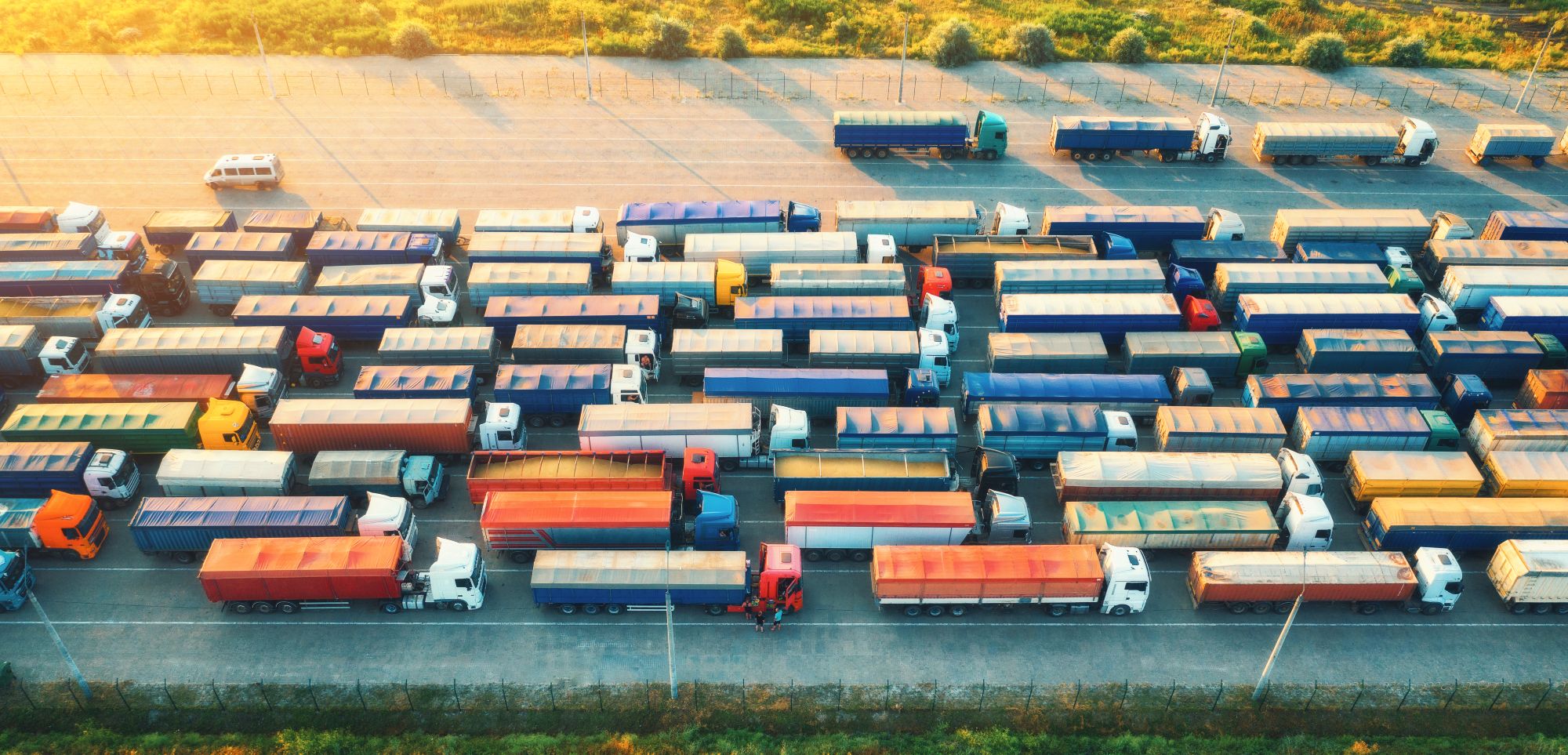
Guest
6 strategie di gestione della flotta che trasformeranno i vostri profitti
Creato: 16/10/2025
•
Aggiornato: 16/10/2025
I gestori di flotte nel Regno Unito devono affrontare sfide finanziarie su molti fronti. L'aumento dei costi operativi dovuto alla volatilità dei prezzi del carburante, l'intensificarsi delle pressioni per la trasformazione della sostenibilità, l'acquisto di veicoli ad alta intensità di capitale, la cronica carenza di talenti e i tempi di inattività prolungati e non programmati incidono negativamente sui profitti.
Se avete già investito in soluzioni di base per ottimizzare i percorsi, migliorare le prestazioni degli autisti, ridurre al minimo il consumo di carburante, monitorare lo stato di salute degli asset e programmare la manutenzione preventiva, ma non avete ottenuto risultati significativi, considerate l'adozione di queste sei strategie pratiche per registrare costantemente un reddito netto positivo.
1. Creare un piano dettagliato del ciclo di vita della flotta
Molti professionisti delle flotte considerano gli asset come inevitabili pozzi di denaro e si sono rassegnati alla loro tendenza a prosciugare le risorse. Questa concezione normalizza il consumo inefficiente di carburante, i costi di manutenzione irragionevolmente elevati e i frequenti fermi macchina dovuti a guasti improvvisi. I veicoli non all'altezza della strada mettono a repentaglio la sicurezza dei conducenti e del carico, con conseguenti tariffe assicurative più elevate e danni duraturi alla reputazione.
Sviluppare una strategia strutturata per il ciclo di vita e la sostituzione della flotta è essenziale per ritirare determinati veicoli prima che vadano a scapito delle casse aziendali. Vi aiuta a gestire il vostro budget in modo prudente, consentendovi di prendere decisioni informate basate su obiettivi a lungo termine anziché su esigenze immediate.
Privilegiate il costo per chilometro, l'età del veicolo e il chilometraggio. Queste metriche vitali indicano quando un bene diventa un buon candidato per il pensionamento, invece di aspettare che diventi inutilizzabile. Questo approccio proattivo riduce il costo totale di proprietà, consentendovi di rivendere gli asset in declino finché il loro valore è relativamente alto. Il ricavato della vendita può compensare il prezzo dell'acquisto e dell'integrazione di veicoli con capacità di automazione parziale nella vostra flotta.
2. Rafforzare la ricerca di personale
La cronica carenza di manodopera nel settore della logistica fa lievitare i costi di gestione delle flotte a causa dell'aumento dei salari, dei tempi di riparazione dei veicoli e delle perdite derivanti da ritardi e scadenze non rispettate. Questo problema è precedente alla pandemia e la Brexit lo ha solo peggiorato. Nel 2023, UK in a Changing Europe e Centre for European Reform hanno stimato che il Regno Unito registrerà un deficit di 330.000 lavoratori dopo la fine della libertà di circolazione.
La chiave è far conoscere meglio la logistica come carriera interessante a livello di base. I gestori di flotte potrebbero fare di più per presentare il settore agli studenti delle scuole primarie e secondarie. Spiegare cosa fanno gli autisti di mezzi pesanti e i meccanici e il loro contributo alla società può dare prestigio a queste professioni. I programmi di apprendistato possono fare miracoli, visto che l'indagine Logistics UK 2022/2023 ha rilevato che il 68% delle persone interessate alla logistica li cerca.
3. Ridurre i colli di bottiglia della struttura
Una cattiva progettazione dell'ambiente di lavoro è un dilemma sottovalutato nella gestione delle flotte. I rallentamenti nel processo di evasione degli ordini possono innescare un effetto domino che finisce per gonfiare i costi operativi. Possono portare a un aumento dei tempi morti, a una sottoutilizzazione dei talenti, a un mancato rispetto dei tempi di consegna e all'insoddisfazione dei clienti. Le inefficienze del flusso di lavoro possono costringere a riallocare le risorse, rimescolando autisti e veicoli e cambiando i percorsi per compensare i ritardi.
La disorganizzazione legata alle strutture non è di competenza dei gestori di flotte. Una stretta collaborazione con la gestione del magazzino è importante per aumentare il flusso logico e la velocità di movimento delle merci all'interno dello spazio. Semplici miglioramenti, come l'installazione di un numero sufficiente di luci a LED e di porte che si aprono a 61 centimetri al secondo (https://www.cornelliron.com/rolling-door-blog/Cornell-blog/how-high-speed-doors-increase-warehouse-productivity), possono ridurre gli errori e aumentare la produttività.
Sfruttare la tecnologia per garantire una comunicazione chiara. L'adozione di una soluzione software che unisca o faccia interagire i sistemi di gestione del magazzino e della flotta offre a tutte le parti interessate una visibilità completa delle operazioni di ciascun reparto. La formazione di un team interfunzionale coltiva una cultura di collaborazione e di responsabilità condivisa, ritenendo tutti collettivamente responsabili degli errori ed evitando di puntare il dito.

4. Modernizzare i processi di riparazione
Un approccio innovativo e pragmatico alla manutenzione dei veicoli è necessario per ridurre i tempi di fermo non programmati. La messa a punto proattiva e la programmazione automatica della manutenzione sono fondamentali per prolungare la durata di vita degli asset, ma la digitalizzazione delle ispezioni e la semplificazione delle riparazioni sono altrettanto importanti per individuare tempestivamente i segnali d'allarme, ripristinare rapidamente la viabilità degli asset e aiutare i tecnici a lavorare in modo efficiente.
Le ispezioni mobili pre-trip sono fondamentali per la manutenzione preventiva degli asset e la conformità. Le app acquisiscono dati in tempo reale, consentono ai conducenti di comunicare i problemi alla direzione e facilitano la registrazione per la revisione, l'analisi e il reporting. Gli ordini di lavoro digitali aiutano a monitorare le riparazioni su tutta la flotta e a garantire che nessuna di esse influisca sui programmi di consegna.
Gli strumenti aggiornati semplificano la vita dei tecnici e completano le iniziative volte a sfruttare i loro punti di forza nell'assegnazione dei compiti. Gli strumenti diagnostici più recenti possono rappresentare una spesa significativa, ma anche un notevole risparmio di tempo. Si ripagano da soli riducendo l'usura prematura dei componenti, prevenendo i guasti e aiutandovi a negoziare per ottenere tariffe assicurative più basse. Ogni nuova tecnologia ha una curva di apprendimento, quindi valutate una formazione adeguata per aggiornare il vostro personale di conseguenza.
5. Creare una rete di meccanici di terze parti
Nel Regno Unito, i veicoli della flotta ben mantenuti possono ancora rompersi a metà del viaggio a causa delle condizioni delle strade. Secondo un rapporto del gennaio 2024 contenente i dati raccolti da 7.000 utenti di Stan the App, c'erano 1,5 milioni di buche sulle strade britanniche. Questa cifra copriva solo il 13% della rete stradale del Paese, suggerendo che il numero effettivo di difetti potrebbe raggiungere gli 11,5 milioni.
Le aree con clima più freddo e umido hanno maggiori probabilità di presentare avvallamenti nel manto stradale. Le amministrazioni locali riempiono milioni di buche all'anno, quindi può essere difficile pianificare i percorsi in anticipo per evitarle. L'integrazione di funzioni autonome nei veicoli della flotta, come il rilevamento degli oggetti basato sul deep learning e le sospensioni adattive, dovrebbe aiutare, ma evitare le buche in tempo reale rimane una sfida continua.
I gestori di flotte prudenti anticipano i guasti, indipendentemente dalla manutenzione corretta dei loro mezzi, e si concentrano sulla prontezza. Collaborano con meccanici mobili locali e officine indipendenti preapprovate per riparare i veicoli guasti, ridurre al minimo i tempi di fermo e promuovere la produttività e la sicurezza dei conducenti.
Esaminate i tecnici automobilistici freelance verificando le loro credenziali, comprendendo la loro specializzazione e controllando i loro strumenti. I meccanici di trenta parti dovrebbero essere l'opzione di ultima istanza, quindi formate i vostri autisti alla risoluzione dei problemi di base e dotateli di attrezzature adeguate.
6. Integrare i veicoli autonomi nelle operazioni dell'ultimo miglio
Affidare la consegna dell'ultimo miglio a sistemi di guida autonoma può rendere questo aspetto critico della logistica più efficiente e meno costoso. Grandi aziende come Amazon, FedEx e UPS hanno usato le loro tasche profonde per sperimentare la consegna autonoma dell'ultimo miglio, dimostrando che i furgoni senza conducente e i droni possono ridurre i costi operativi della logistica urbana e aumentare la soddisfazione dei clienti.
Il successo dei progetti pilota di integrazione dei veicoli autonomi dovrebbe ispirare le organizzazioni con flotte più piccole a innovare. Tuttavia, l'elevato investimento iniziale percepito è solo uno degli ostacoli che molti gestori di flotte devono affrontare. Anche le infrastrutture, le normative e l'accettazione da parte dei consumatori sono fattori importanti.
Fortunatamente, il Parlamento britannico ha approvato l'Automated Vehicles Act 2024 per porre le basi normative per le operazioni autonome dell'ultimo miglio. Nel giugno 2025, il membro del Parlamento Lilian Greenwood ha condiviso un aggiornamento sul fatto che il governo [stava ancora lavorando sulle linee guida] (https://www.gov.uk/government/speeches/automated-vehicles-act-2024-implementation), indicando che i responsabili politici non stavano tagliando le gambe per ispirare le parti interessate una volta implementata la legge.
Implementare strategie per massimizzare i tempi di attività della flotta
La revisione delle operazioni della flotta è fondamentale per migliorare i profitti, ma ogni cambiamento comporta opportunità e rischi. I manager possono provare diverse strategie, dai piani dettagliati del ciclo di vita all'integrazione dei veicoli autonomi. Con lungimiranza, innovazione, creatività, collaborazione, pragmatismo e intraprendenza, è possibile risolvere i problemi più urgenti e superare nuove sfide per essere in attivo.




